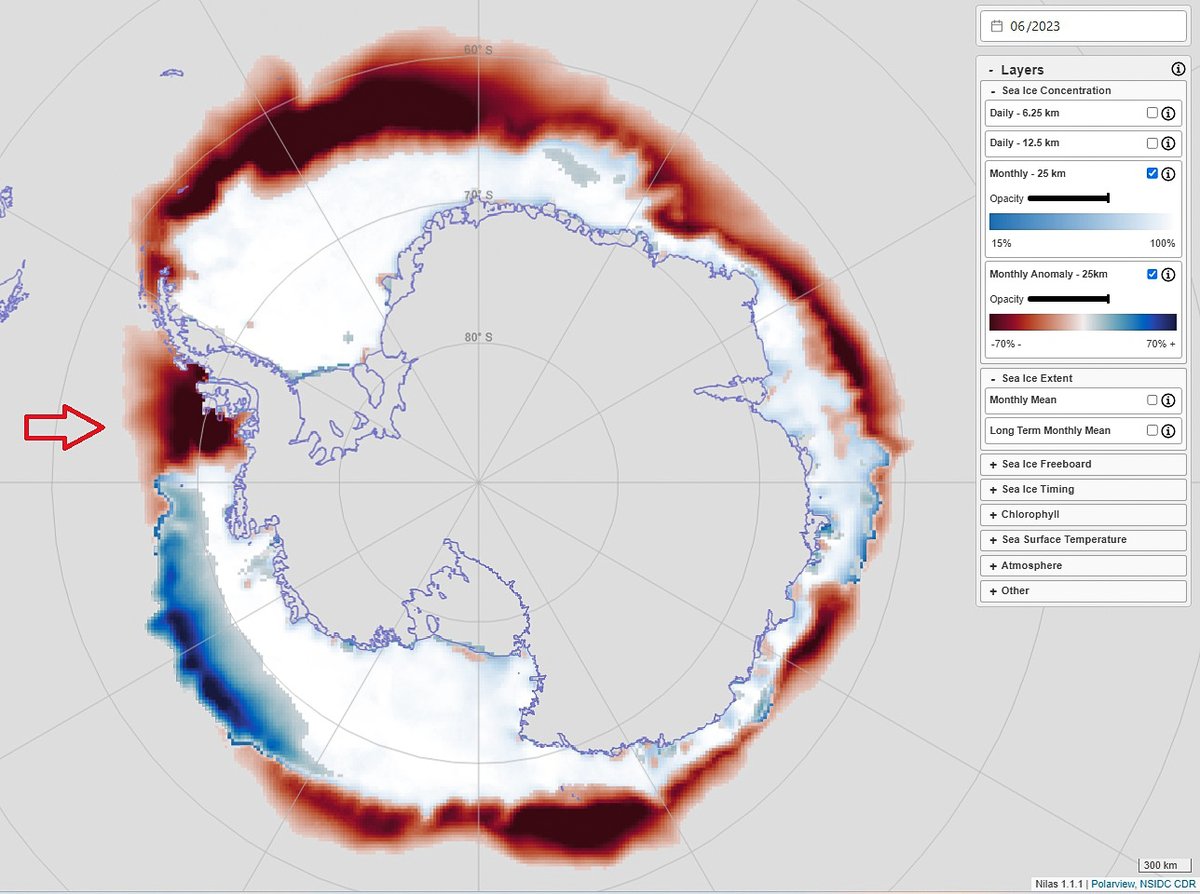Anomalies in #Antarctic sea ice concentration show the monthly variation from the long-term mean. This map from nilas.org shows more ➖ than ➕ anomalies for June. See the lack of sea ice in Bellingshausen Sea (arrowed), almost at summer ice levels in mid-winter! 

This map from @NSIDC and @NASAEarth shows sea ice concentration on 17 June. The orange line is the typical extent for that day based on the average from 1981 to 2010. Some coastal regions are now ice-free where that has not been observed before. 

The last decade has seen increased variability. Sea-ice area reached a record low in Feb 2023 following the previous record low in Feb 2022, and an extremely low summer avg in 2016/17. Is this shift in Antarctic sea ice a response to climate change? We need to find out @IPCC_CH. 

⚠️ A statement of concern and a call for urgent intensification of research has been issued by @WMO.
Read at aappartnership.org.au/polar-scientis…
Read at aappartnership.org.au/polar-scientis…

More info on Antarctic sea ice from @Ant_Partnership and @AntarcticSciAus ⤵️
aappartnership.org.au/science-briefi…
aappartnership.org.au/science-briefi…
Stay in touch with our research on the role of #Antarctica and the @_SouthernOcean
in the global #climate system - please sign up to our mailing list at aappartnership.org.au/contact-us/. Next bulletin by end of June!
in the global #climate system - please sign up to our mailing list at aappartnership.org.au/contact-us/. Next bulletin by end of June!

• • •
Missing some Tweet in this thread? You can try to
force a refresh









